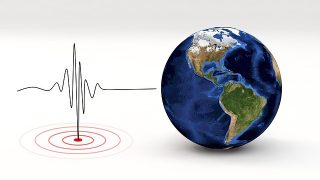Morocco Earthquake Death Toll Nearing 3,000

By Stefan J. Bos, Chief International Correspondent Worthy News
RABAT (Worthy News) – International teams joined state efforts to find survivors between the ruins of Morocco’s biggest earthquake in over a century as the death toll approached 3,000, with many still lying beneath the rubble.
State TV reported late Monday that the death toll had risen to 2,862, with 2,562 people injured.
The magnitude 6.8 quake struck shortly after 11 pm local time on Friday, collapsing stone buildings and jolting people from their beds across a wide area.
The epicenter was near the rural town of Ighil, in the Al Haouz province, 44 miles (70 kilometers) south of Marrakech, a UNESCO World Heritage site, several sources said.
With many people still unaccounted for in the area, the death toll was expected to quickly pass 3,000 as in hard-to-reach areas, the number of missing remained unclear.
Survivors in parts of Morocco hardest hit by the tremor camped outside for a fourth night as
search teams from Spain, Britain, and Qatar accompanied their Moroccan colleagues to try to save lives.
As the emergency scale became clear, Morocco’s central bank created a special account to receive donations worldwide.
RELUCTANT ACCEPTING AID
However, Morocco has been reluctant to accept practical Western aid, including from the United States, State Department spokesperson Matt Miller confirmed Monday.
He said the Moroccan government has still not taken the U.S. up on its offer to provide support in its earthquake relief despite direct outreach from Secretary of State Antony Blinken.
Blinken spoke with Morocco’s foreign minister this weekend and expressed his condolences, Miller said.
“They also discussed how the United States can best support the government of Morocco’s leadership of the humanitarian response to the tragedy, and the secretary and the foreign minister pledged to stay in close contact as the response efforts continue,” Miller said.
Asked whether the U.S. was providing any direct aid, Miller said, “We have made the offer for assistance and are in close consultations with the Moroccan government about how we can best provide that assistance.”
Despite the controversy, ambulances and aid teams in trucks reached for the first time Ighil, the mountainous area where the earthquake’s epicenter was located, local media said.
Emergency teams worked Monday to clear rockfalls blocking rocks to over a dozen remote villages in the area, witnesses said. Moroccan troops walked on foot along rugged roads to provide aid, state TV reported.
RESCUE TEAMS SEARCHING
Rescue teams searched for missing victims under the rubble in the devastated Talat N’Yaaqoub village in the Atlas Mountains, which was almost entirely flattened.
TV footage also showed military helicopters dropping aid packages from the air into hard-to-reach areas.
Yet help came too late for many victims in the village of Tinmel, where almost every house was pulverized, and the entire community has been left homeless. The stench of death from dozens of animals buried under the rubble wafts through parts of the village, reporters noticed.
Mouhamad Elhasan, 59, said he had eaten dinner with his family when the earthquake struck. His 31-year-old son fled outside and was hit as their neighbor’s roof collapsed, trapping him under the rubble.
Elhasan said he searched for his son as he cried for help. Eventually, the cries stopped, and by the time he reached his son, he was dead. Elhasan and his wife and daughter remained inside their home and survived.
“If he had stayed inside the house, he would have been okay,” Elhasan added. In Tinmel and other villages, residents said they had pulled people out of the rubble with their bare hands.
In Tikekhte, where few buildings have been left standing, 66-year-old Mohamed Ouchen described how residents rescued 25 people – one of whom was his sister.
USING BARE HANDS
“We were busy rescuing. Because we didn’t have tools, we used our hands,” he said.
“Her head was visible, and we kept digging by hand.”
Footage from the remote village of Imi N’Tala, filmed by Spanish rescuer Antonio Nogales of the aid group Bomberos Unidos Sin Fronteras (United Firefighters Without Borders), showed men and dogs clambering over steep slopes covered in rubble.
“The level of destruction is … absolute,” said Nogales on Monday, struggling to find the right word to describe what he saw. “Not a single house has stayed upright.”
Despite the scale of the damage, he said rescuers searching with dogs still hoped to find survivors.
Pope Francis shared that hope as he expressed his sorrow and solidarity with the people of Morocco in a telegram to the state.
He earlier prayed for those impacted by the quake and asked the faithful to pray for the African nation.
If you are interested in articles produced by Worthy News, please check out our FREE sydication service available to churches or online Christian ministries. To find out more, visit Worthy Plugins.
